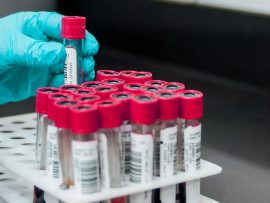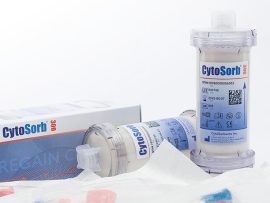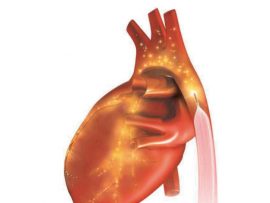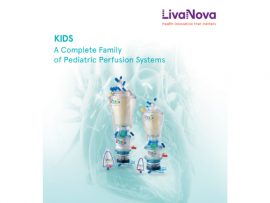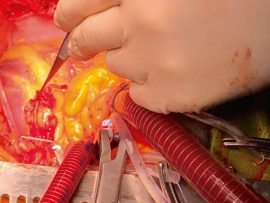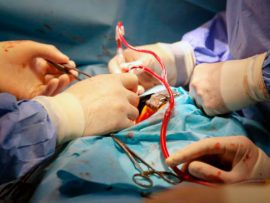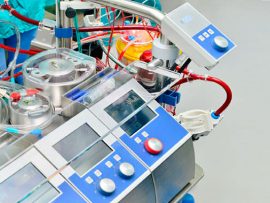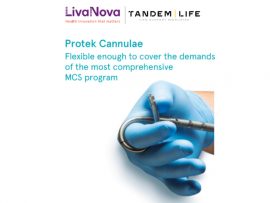Abstract Introduction: The use of cardiopulmonary bypass (CBP; also known as a heart-lung machine) in newborns with complex congenital heart defects may result in brain damage. Magnetic resonance imaging (MRI) assessments..
Read MoreAbstract Pathophysiology There are two types of HIT, depending on the absence or presence of an immune mediation. Type 1 is a non-immune-mediated direct activation of platelets by heparin that..
Read MoreAbstract Background The aim of this retrospective observational study was to explore the early predictive parameters for maximum amplitude in the kaolin with heparinase (HKH) assay (MAHKH) of TEG6s Platelet Mapping..
Read MoreAbstract Introduction Cytokine adsorption using the CytoSorb® adsorber has been proposed in various clinical settings including sepsis, ARDS, hyperinflammatory syndromes, cardiac surgery or recovery after cardiac arrest. The aim of..
Read MoreAbstract Cardiac surgery on cardiopulmonary bypass (CPB) is associated with postoperative renal dysfunction, one of the most common complications of this surgical cohort. Acute kidney injury (AKI) is associated with..
Read MoreAbstract Over a million cardiac operations are performed annually. Most surgeries use cardiopulmonary bypass (CPB) to operate on a non-beating heart in a bloodless environment while maintaining systemic perfusion and..
Read MoreAbstract Background: Cell-derived microparticles (MPs) as membrane vesicles are procoagulant. They play a role in surgical hemostasis. In this study, the correlations between the circulating level of cell-derived MPs and..
Read MoreAbstract Background Selective antegrade cerebral perfusion (SACP) is adopted as an alternative to deep hypothermic circulatory arrest (DHCA) during aortic arch surgery. However, there is still no preclinical evidence to..
Read MoreAbstract Objective Our aim was to analyse whether prophylactic preoperative intraaortic balloon pump (IABP) improves outcomes in hemodynamically stable patients with low (LVEF ≤30%) undergoing elective (CABG) using (CPB). Secondary aim was to..
Read MoreAbstract Background Current guidelines recommend enteral nutrition (EN) should be implemented as early as possible in patients after cardiopulmonary bypass (CPB), but the optimal time to initiate EN is still..
Read MoreAbstract Background Nontechnical skills are critical in cardiac surgery but currently there is no formal paradigm to teach these in residency training. We investigated the use of the Nontechnical skills..
Read MoreAbstract Importance Phthalate chemicals are used to manufacture disposable plastic medical products, including blood storage bags and components of cardiopulmonary bypass (CPB) circuits. During cardiac surgery, patients can be inadvertently exposed..
Read MoreAbstract The present study aimed to assess the changes in the immunological parameters of patients undergoing cardiac surgery with cardiopulmonary bypass (CPB). The serum or plasma samples of patients were..
Read MoreAbstract Background Postoperative morbidity and mortality after cardiac surgery with (CPB) remain high despite recent advances in both anesthesia and perioperative management. Among modifiable risk factors for , optimal during and after surgery..
Read MoreAbstract A hypoxic–hyperoxic preconditioning (HHP) may be associated with cardioprotection by reducing endothelial damage and a beneficial effect on postoperative outcome in patients undergoing cardiac surgery with cardiopulmonary bypass (CPB)...
Read MoreCurious about why we chose to develop a video game instead of a mere online simulator? We receive this question frequently, so let us share with you a few compelling..
Read MoreYour Ultimate Guide to Get to Know virCPB Welcome to the world of virCPB, where education meets gaming to revolutionize the way perfusion students and perfusionists train and master their..
Read MoreAbstract OBJECTIVE: Measuring fluid responsiveness is important in the management of critically ill patients, with a 10–15% change in cardiac output typically being used to indicate “fluid responsiveness.” Ideally, these changes would..
Read MoreAbstract During a cardiopulmonary bypass (CPB) procedure using a heart-lung machine, the volume of blood inside the venous reservoir is a crucial piece of information for the perfusionist to make..
Read MoreAbstract Introduction Acute lung injury (ALI) is a devastating pulmonary illness with diffuse inflammatory responses. Hydromorphone (Hyd) is an opioid agonist used for relieving moderate-to-severe pain. The present work investigated the..
Read MoreAbstract Objective To identify potentially modifiable risk factors related to prolonged cardiovascular pharmacological support after weaning from cardiopulmonary bypass (CPB). Methods This is a secondary analysis of two prospective cohort..
Read MoreAbstract Pediatric Literature As the practice of ultrafiltration arose from pediatric cardiac surgery, much of the evidence to support MUF is from low-powered pediatric studies. Some early, single-center literature, as..
Read MoreAbstract Hemodilution and Volume Overload The use of CPB necessitates priming of the CPB circuit, which is typically accomplished using 1-to-2 liters of a crystalloid solution. In addition, 1-to-3 liters..
Read MoreAbstract Background Major cardiac surgery related blood loss is associated with increased postoperative morbidity and mortality. Platelet dysfunction is believed to contribute to post-cardiopulmonary bypass (CPB)-induced microvascular bleeding. We hypothesised..
Read MoreAbstract Extracorporeal circulation (ECC) procedures, such as cardiopulmonary bypass (CPB) and extracorporeal membrane oxygenation (ECMO), take over the function of one or more organs, providing clinicians time to treat underlying pathophysiological..
Read MoreAbstract The advantages and disadvantages of using corticosteroids in children undergoing cardiac surgery is still contentious. To examine how perioperative corticosteroids affect postoperative mortality and clinical outcomes in pediatric cardiac..
Read MoreAbstract Objective: We aim to comprehensively describe the transcriptional activity and signaling of pulmonary parenchymal and immune cells before and after cardiopulmonary bypass (CPB) by using a multi-omic approach coupled..
Read MoreAbstract The ProtekDuo® is a dual lumen cannula that can be used in numerous configurations to treat cardiogenic shock and hypotension. Its default function is as a temporary percutaneous right..
Read MoreAbstract Background We used sodium citrate as an alternative anticoagulation agent to heparin in the procedure of autologous blood transfusion with patients with postoperative haemorrhage after CPB. The aim of..
Read MoreAbstract Objectives The management of traumatic cardiac injury (TCI) may require a prompt treatment, including the use of cardiopulmonary bypass (CPB) followed by surgical repair. This study evaluated the surgical..
Read More


